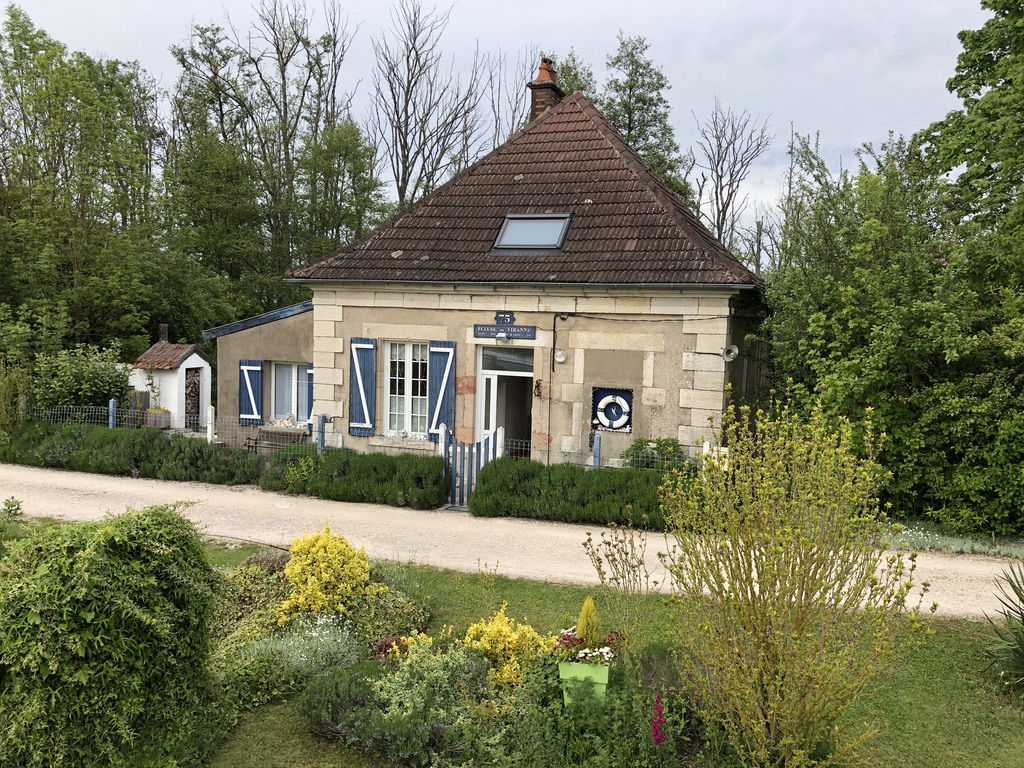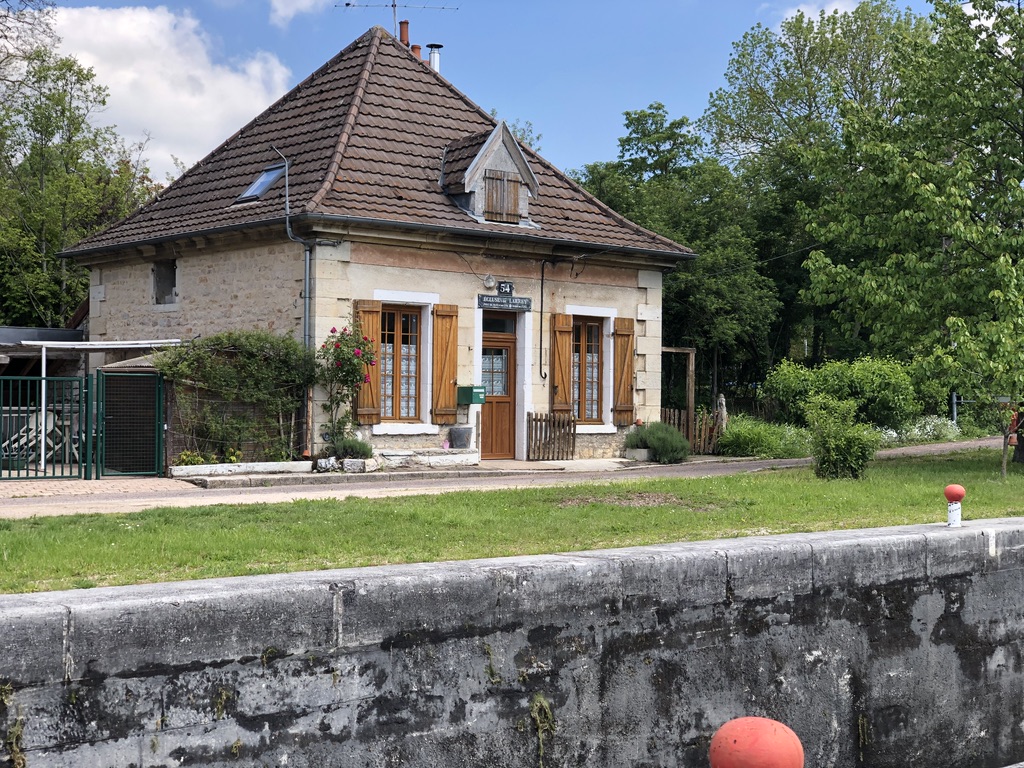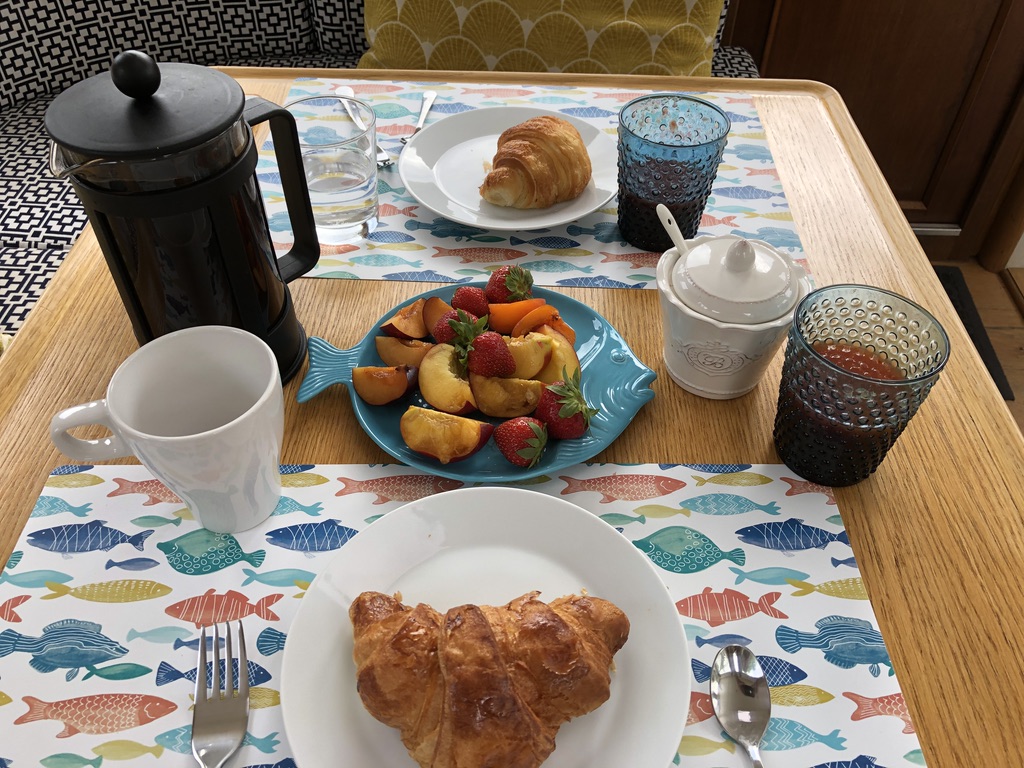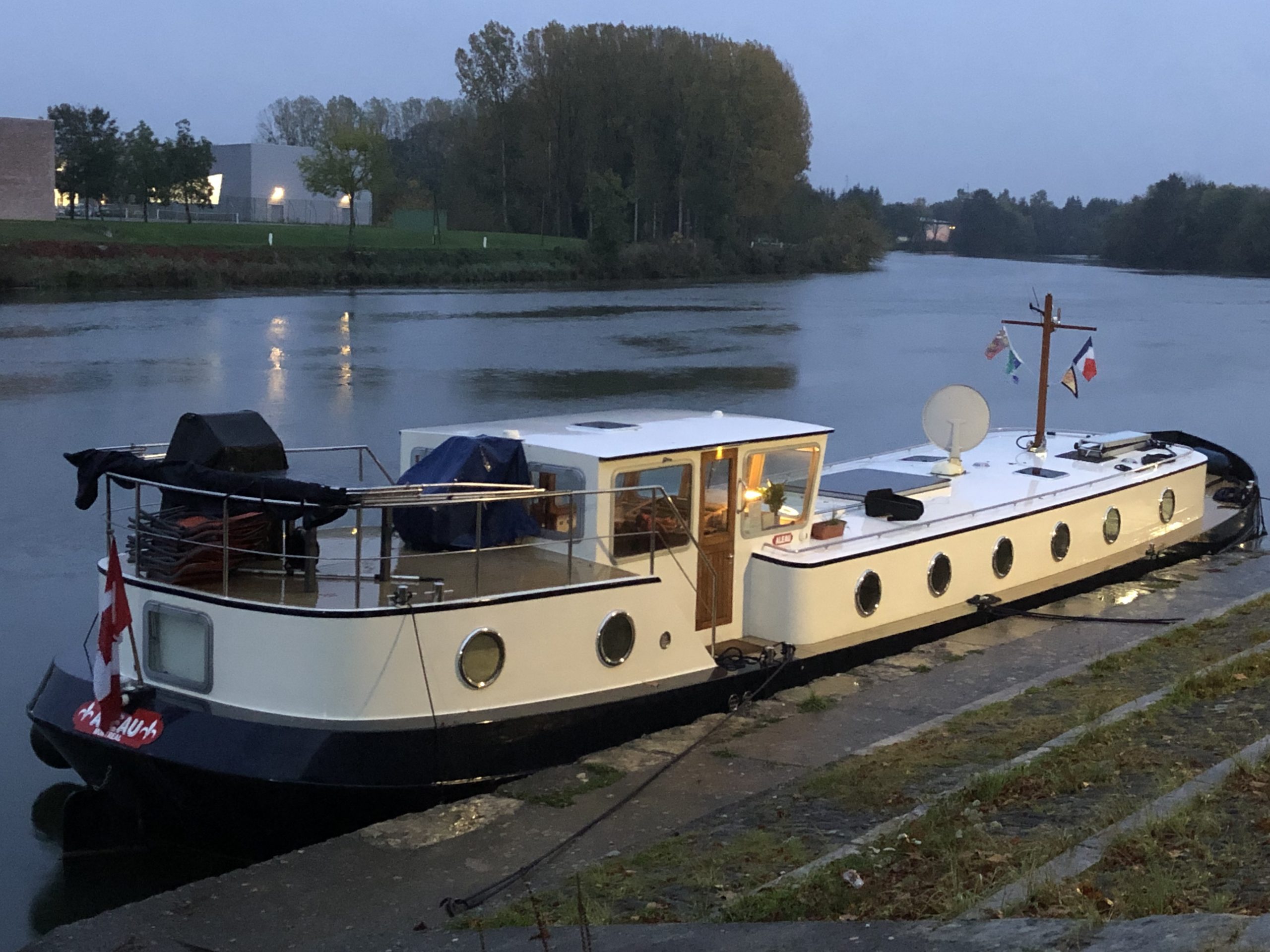Dijon is 29 kilometres from St. Jean-de-Losne. By commuter train, it takes less than 30 minutes. By barge, it takes two full days. (Locks open at 9am, close for one hour for lunch, and then are open until 7pm.) As we didn’t start until the afternoon, it took us three days. It’s a busy cruise. There are 22 locks between St. Jean-de-Losne and Dijon. That averages almost one every kilometre.
And the speed limit on canals in France is 6 kilometres per hour. Going any faster damages the banks – so, the maximum speed allowed is 6 km/h. On any canal. In some spots, you have to go even slower. Factoring in the time spent in locks, our average speed to Dijon was less than 2 km/h. Include the one hour the locks were closed for lunch and our speed was even slower. Saying we were moving at a snail’s pace would be an insult to snails.
The speed limit on rivers is much higher. On the Saône (which you’ll be reading about later on), it’s 30 km/h. Aleau can’t go that fast. Her top speed is 10 km/h – and that’s running flat out. Putting a strain on everything and burning way too much fuel. She is happy at 9 km/h. So that’s our top speed on rivers. On canals, we obey the law and stay below 6 km/h.

Depending on the canal, you either operate the locks yourself – or an éclusier (lock keeper) is there to help you. (You still have to manage your ropes – which is no small task. Especially when you’re a novice.)
On the Canal de Bourgogne, you have help. An éclusier from the VNF* operates the gates for you. He or she then speeds ahead on a motor scooter to prepare the next lock for your arrival. This happens repeatedly until another VNF worker takes over and the original éclusier returns to the beginning of his/her area. For someone on their own for the first time, it is a big relief.
* VNF is the Voies Navigables de France, the organization responsible for almost all the rivers and canals in France – more than 8,000 km. of them. You pay for a “vignette” which is displayed on a wheelhouse window. The cost of a one-year vignette is €570 (about $900 Cdn). That includes the 17% discount if purchased before the end of March.

There are homes for lock keepers at each lock. As there are no permanent lock keepers anymore, the homes are rented for use as private dwellings.

Since there are 22 locks between St. Jean-de-Losne and Dijon, we got to see 22 lock-keepers homes – now used as private residences. The sign above the door shows the Lock Number, and the distance to the lock on either side of the one you are passing through. The signs (and the homes) have been there for awhile. Construction of the canal began in 1775.

As the trip takes at least two days (three for us), it means tying up somewhere and spending the night moored on the canal. And having breakfast onboard the next morning. A croissant, fruit, freshly-squeezed orange juice, and coffee. It’s France. What else would one have for breakfast? This shot was taken in the wheelhouse. As you will see later on, we have our choice of four dining areas on Aleau.

